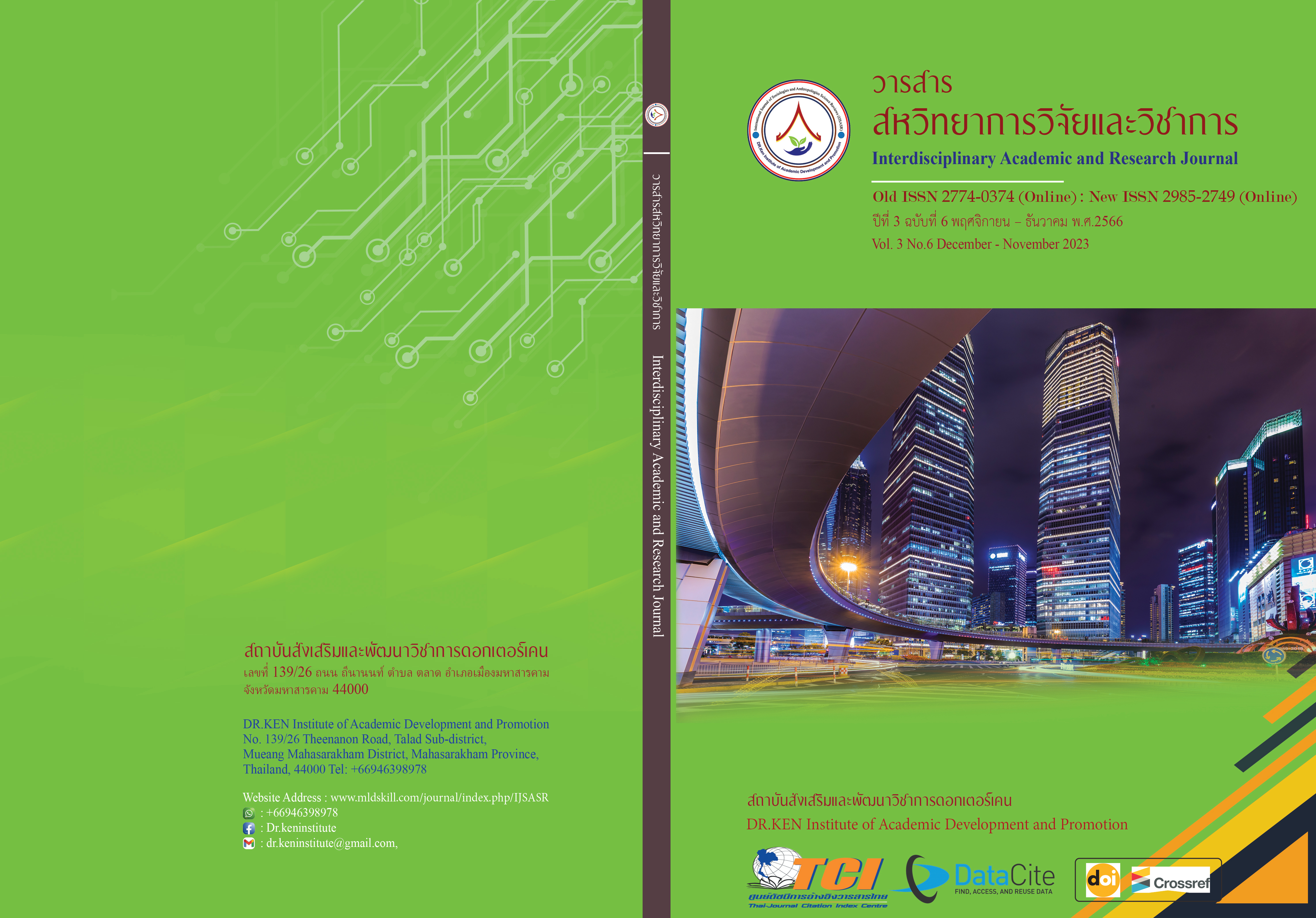The Mathematical Competencies of Grade 7 Students
DOI:
https://doi.org/10.60027/iarj.2023.271127Keywords:
Mathematical Competencies;, Learning Activities;, Concepts of Institute for the Promotion of Science and TechnologyAbstract
Background and Aims: Mathematics plays a very important role in the development of human thinking, making them creative, thinking systematically, with a pattern, being able to analyze problems, and situations carefully, helping to predict, plan, make decisions, solve problems, and apply it in everyday life correctly and appropriately. In addition, mathematics is a tool for studying science, technology, and other sciences, mathematics is useful for living, improving the quality of life, and being able to live happily with others. This research aims were: 1) a study of the effectiveness of the institute for the promotion of Science and Technology together with grade 7 students' subject powers to be effective according to the criteria 70/70. 2) to Mathematical Competencies of grade 7 students Sarakham Phitthayakom School.
Methodology: The targets were students in grade 7 students Sarakham Phitthayakom School number 42 students studying in the second semester of the academic year 2022. The research instruments were: 1) subject test 9 items on the promotion of Science and Technology 2) subject test 12 items mathematical performance test It is subjective. Data were analyzed by using frequency percentage mean standard deviation task analysis and analytical description of mathematical competency forms.
Results: (1) a study of effectiveness of the institute for the promotion of science and Technology of grade 7 students subject powers effective to the criteria 70.12/70.75. (2) Mathematical Competencies of Grade 7 students The findings revealed that students have the highest mathematical competency of the 2nd competency of using mathematics (Employ: E), followed by the 1st competency of thinking/problem solving (Formulate: F), the 3rd competency of mathematical Reasoning (Mathematical Reasoning: R) and the 4th competency of Interpret and Evaluate (Interpret and Evaluate: I).
Conclusion: The study found that learning activities according to the concept of the Institute for the Promotion of Teaching Science and Technology are effective in teaching exponents. And a study of mathematics performance of Mathayom 1 students shows a link between teaching and mathematics performance in order of students' outstanding performance.
References
กระทรวงศึกษาธิการ สำนักงานคณะกรรมการการศึกษาขั้นพื้นฐาน. (2553). แนวทางการจัดการ เรียนรู้ตามหลักสูตรแกนกลางการศึกษาขั้นพื้นฐาน พุทธศักราช 2551. กรุงเทพฯ: โรงพิมพ์ชุมนุมสหกรณ์การเกษตรแห่งประเทศไทย จำกัด.
กระทรวงศึกษาธิการ. (2551). หลักสูตรแกนกลางการศึกษาขั้นพื้นฐาน พุทธศักราช 2551. กรุงเทพฯ: โรงพิมพ์รับส่งสินค้าและพัสดุภัณฑ์.
กษมา เกิดประสงค์. (2560). การพัฒนารูปแบบการจัดการเรียนรู้ที่เสริมสร้างสมรรถนะทางคณิตศาสตร์ของนักเรียนชั้นมัธยมศึกษาปีที่ 1. กรุงเทพฯ: มหาวิทยาลัยศรีนครินทรวิโรฒ.
สถาบันส่งเสริมการสอนวิทยาศาสตร์และเทคโนโลยี โครงการ PISA ประเทศไทย. (2557). ตัวอย่างการประเมินผลนานาชาติ PISA คณิตศาสตร์. กรุงเทพฯ: อรุณการพิมพ์.
สถาบันส่งเสริมการสอนวิทยาศาสตร์และเทคโนโลยี. (2553). รายงานผลการวิเคราะห์ข้อมูลเบื้องต้น: โครงการ PISA 2009. กรุงเทพฯ: อรุณการพิมพ์.
สถาบันส่งเสริมการสอนวิทยาศาสตร์และเทคโนโลยี. (2554). ผลการประเมิน PISA 2009 การอ่าน คณิตศาสตร์ และวิทยาศาสตร์. กรุงเทพฯ: อรุณการพิมพ์.
สถาบันส่งเสริมการสอนวิทยาศาสตร์และเทคโนโลยี. (2565). เอกสารประกอบการอบรมการประเมินสมรรถนะทางคณิตศาสตร์โครงการเพิ่มศักยภาพครูให้มีสมรรถนะของครูยุคใหม่สำหรับการเรียนรู้ในศตวรรษที่ 21.สืบค้นเมื่อวันที่ 4 กันยายน 2565 จาก Math Competency IPST(1).pdf
PISA THAILAND. (2563). Pisa 2021 กับการประเมินความฉลาดรู้ด้านคณิตศาสตร์. Focus ประเด็นจาก PISA, พฤษภาคม 2563, 53.
Stacey, K., & Turner, R. (2014). Assessing Mathematical Literacy. The PISA Experience: Springer International Publishing Switzerland. https://doi.org/10.1007/978-3-319-10121-7
Downloads
Published
How to Cite
Issue
Section
License
Copyright (c) 2023 Rattikan Phonsri, Ramnaree Nontapa

This work is licensed under a Creative Commons Attribution-NonCommercial-NoDerivatives 4.0 International License.
Copyright on any article in the Interdisciplinary Academic and Research Journal is retained by the author(s) under the under the Creative Commons Attribution-NonCommercial-NoDerivatives 4.0 International License. Permission to use text, content, images, etc. of publication. Any user to read, download, copy, distribute, print, search, or link to the full texts of articles, crawl them for indexing, pass them as data to software, or use them for any other lawful purpose. But do not use it for commercial use or with the intent to benefit any business.
















.png)


